
Canada has already started burning this year.
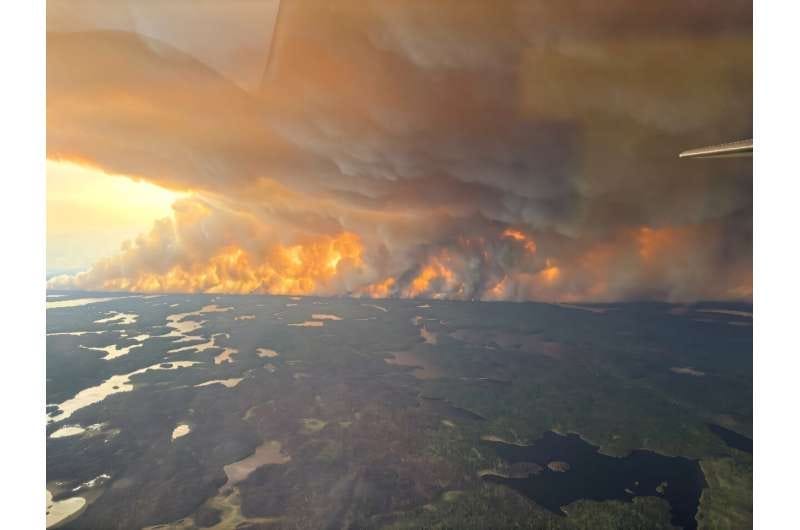
Canadian wildfire emergency spreads to second province
The western Canadian province of Saskatchewan declared a wildfire emergency on Thursday, becoming the second to do so…phys.org
On Friday, 175 active fires were burning, of which 95 were out of control, according to the Canadian Interagency Forest Fire Centre.
More than 90 wildfires are out of control in Canada
Canada was battling 175 wildfires on Friday, of which 95 were uncontained, prompting evacuations and a military…news.sky.com
These fires have CONSEQUENCES.
One of the first is the smoke they produce.
This smoke is extremely unhealthy for both plants and people. It can stunt plant growth and cause forests to “shut down” their carbon uptake. It gets in people's lungs and affects them pretty much the same way smoking does. Without the nicotine “rush”.
“Daniel Swain, climate scientist and meteorologist at University of California, Los Angeles (UCLA), said smoke from Canada was already visible in the western US state of Colorado today, carried by favorable winds.”
“The intense fires early in the year will likely “have knock-on effects in the US later this fire season”
Billowing smoke from Canadian wildfires wafts into the U.S.
The Manitoba wildfires have forced 17,000 people to flee the province. Plumes of heavy smoke are expected to drift into…www.npr.org
Heavy clouds of smoke from the fires are making their way into the United States.
Meteorologists report that the smoke will waft into the Northern Plains and Midwest. The states most heavily impacted — Wisconsin, Michigan and Minnesota — have all issued air quality alerts for their residents.
Alerts in Wisconsin and Michigan counties are in effect until Saturday, with both states warning that the quality of air will become unhealthy for sensitive groups, including children, anyone with respiratory issues and older people.
In Minnesota, where:
the ENTIRE state was under alert for compromised air quality.
The state’s Pollution Control Agency warned that air quality was expected to reach the red category — impacting both sensitive groups and some members of the general public. The Minnesota alert is in effect until Monday.
Wildfire smoke is REALLY bad for your lungs. It significantly increases the mortality rate in areas where people are exposed to it.
Recent studies have underscored the health dangers of breathing in wildfire smoke. This week, an analysis published in the journal Epidemiology found that the risk of going to the hospital for cardiorespiratory problems like hypertension or heart attack rose for months after exposure to smoke — showing that the health effects can linger long after the fires themselves have been put out.
May Lin Wilgus, a doctor and researcher at UCLA, compares breathing wildfire smoke to smoking cigarettes — a lot of cigarettes.
On a smoky day, when AQI levels reach 100 to 200, “the exposure to the fine particulate matter, the air pollution, is similar to smoking a quarter to half a pack a day,” Jan 8, 2025
If you live in Minnesota, HOW do you NOT breath the air?
How many days a year do you spend inside breathing filtered air because breathing “outside” air will literally shorten your life?
When you used to “imagine the future” did you ever think it would be filled with the sound of people constantly coughing, hacking, and wheezing? A future where everyone's lifespan is shortened by 20 years from a lifetime exposure to wildfire smoke.
I know I didn't.
I also didn't realize how much damage smoke can do to agricultural production. “Smoke” in effect causes “shade” and absolutely no plants that like full-sun (AKA — all food crops) grow well in “smokey conditions”.
Contrasting yield responses at varying levels of shade suggest different suitability of crops for…
Despite the large body of research surrounding crop growth parameters, there is still a lack of systematic assessments…link.springer.com
The ratio for cereals is about 1% shade = 1%-1.5% loss of yield. The ratio for maize is even worse. Across the Midwest this weekend the overall “shade effect” was probably a -10% reduction in sunlight.
Now imagine the smoke from multiple wildfires across North America, and Brazil, and Siberia, and Indonesia, and Australia, and Argentina. Imagine the effect this smoke is going to have on agricultural outputs.
This “burning” of the global forests is really just getting started. It’s going to go on for decades and each year it is going to get worse. It won’t stop until there is literally “nothing left to burn”.
There will be famines.
This Summer is probably going to be HOT.
The Earth Energy Imbalance (EEI) is still fantastically high. ENERGY from the Sun is pouring into the Climate System at a rate that hasn't been this high for millions of years.
According to NOAA, excessive heat is already the leading cause of weather-related deaths in the United States, and getting worse. A 2024 study found that the number of heat-related deaths in the US have risen 117% since 1999.
The world's oceans are not cooling down.

Neither are the world’s surface air temperatures.
The La Nina pattern in the Pacific is fading away.

AND IT DIDN'T COOL THINGS DOWN.
2025 could finish up being warmer than 2023. The La Nina pattern is what probably kept it from being warmer than 2024.
We are feeling the effects of that already.
Here’s what that heat on the West Coast looked like over the weekend.
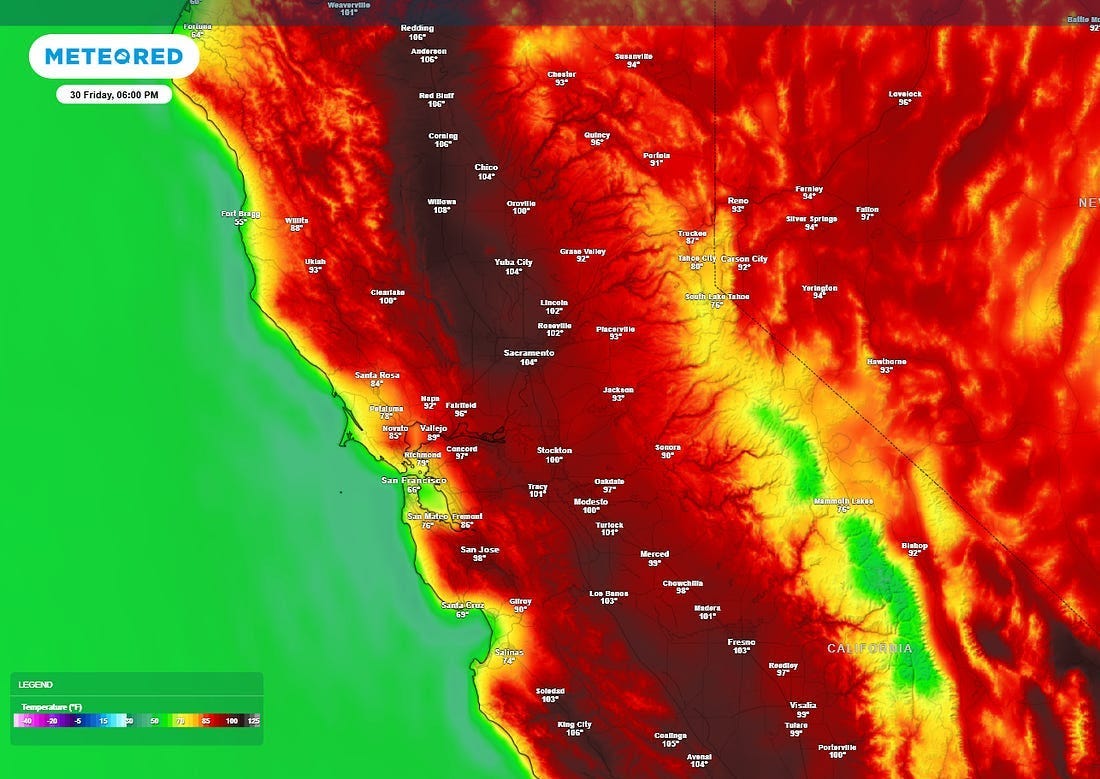
The WMO has “sorta” acknowledged the reality of the situation.
It’s “sorta” like the way they acknowledged things back in 2022 (CR-02 Only on Medium)
WMO Global Annual to Decadal Climate Update (2025–2029)
The Global Annual to Decadal Climate Update is issued annually by the World Meteorological Organization (WMO). It….wmo.int
Here's what they think the next five years are going to bring.
80% chance that at least one of the next five years will exceed 2024 as the warmest on record
86% chance that at least one of next five years will be more than 1.5°C above the 1850–1900 average
70% chance that 5-year average warming for 2025–2029 will be more than 1.5 °C
Long-term warming (averaged over decades) remains below 1.5°C
Arctic warming predicted to continue to outstrip global average
Precipitation patterns have big regional variations
The report forecasts that the annually averaged global mean near-surface temperature for each year between 2025 and 2029 is predicted to be between 1.2°C and 1.9°C higher than the average over the years 1850–1900.
What this means is that they think any given year “could be” as low as +1.2°C over baseline or as high as +1.9°C over baseline. This basically says that they think there will be another El Nino between now and 2029 causing the +1.9°C “peak”. It implies that they think some of these years will be significantly cooler than 2025 has been.
The report finds that there is an 80% chance that at least one year between 2025 and 2029 will be warmer than the warmest year on record (currently 2024).
Ummm…this is just saying that they expect the peak of the next El Nino to be hotter than the peak in 2024. That's a pretty safe bet.
And there is an 86% chance that at least one year will be more than 1.5°C above the pre-industrial level.
Ummm…we have ALREADY HAD almost 2 years of +1.5°C over baseline temperatures. Saying that it’s likely to happen again seems obvious. BUT, it does reveal that Mainstream Climate Science is still holding onto hope that the majority of the next five years are cooler than 2024 was.
There is a forecast 70% chance that the five-year average warming for 2025–2029 will be more than +1.5°C over baseline, according to the report.
This is up from 47% in last year’s report for the 2024–2028 period.
Up from 32% in the 2023 report for the 2023–2027 period.
If the five year average temperature for the next five years is above +1.5°C of warming. Then as of NOW, we are functionally above +1.5°C.
The UK’s Met Agency, for the FIRST TIME, found that there is a “possibility” of temperatures exceeding +2°C for a WHOLE YEAR during this time period.
The world could experience a year above 2°C of warming by 2029
2024 was the first single year to surpass the 1.5°C global warming threshold — now scientists predict that a year above…www.newscientist.com
Their results suggest the average temperature in a single year could exceed 2°C above pre-industrial times by 2029. That was effectively impossible a few years ago,” — Adam Scaife the Met Office
Meanwhile, there is a 70 per cent chance that average warming for the entire 2025–2029 period will exceed 1.5°C. The WMO has stated.
“These latest predictions suggest that we really are very close now to having 1.5°C years [being] commonplace. These are shocking statistics.”
The chances of seeing a year above +2°C of warming are still very slim, with the WMO/Met Office team estimating the probability at only 1%.
“It’s exceptionally unlikely, but it could happen,” — Leon Hermanson at the Met Office.
Pushing the annual average temperature above 2°C is likely to require a “perfect storm” of factors. These would include a powerful El Niño pattern that would drive warmth from the Pacific Ocean, alongside a positive Arctic Oscillation, which would increase land warming across Eurasia. While the odds are currently slim.
The likelihood of a +2°C year of sustained warming is expected to increase dramatically over the coming years as the world's oceans continue to warm at unprecedented rates.
The 12-month moving average of global mean temperature now stands at 1.62 ± 0.07 °C (2.92 ± 0.13 °F) above the pre-industrial baseline.
From: Berkeley Earth April 2025 Temperature Update
This marks a SLIGHT decline from recent peak values, and global temperatures remain well above average even as the La Nina conditions fade.
Remember — La Nina years are cooler because cold water is churned to the surface in the Equatorial Pacific and literally “eats heat” as it warms. The planet is cooled but the Pacific warms up.
Ocean heat content in 2024 - Nature Reviews Earth & Environment
Global full-depth ocean heat content (OHC) gain since 1960 reached a record 452 ± 77 ZJ in 2024. OHC was 15 ± 9 ZJ….www.nature.com
Global full-depth ocean heat content (OHC) gain since 1960 reached a record 452 ± 77 ZJ in 2024.
OHC was 15 ± 9 ZJ higher than in 2023, primarily associated with warming in the Atlantic and Indian Oceans.
FYI — 15ZJ is equal to about 471 MILLION Hiroshima bombs. About 3.4 Hiros per sq. mile of ocean. In BOTH 2023 and 2024.
The most vigorous ocean warming from 2023 to 2024 occurred in the Northwest Pacific, Southwest and East Indian oceans, and the Pacific sector of the Southern Ocean.
Things aren’t cooling down in 2025.
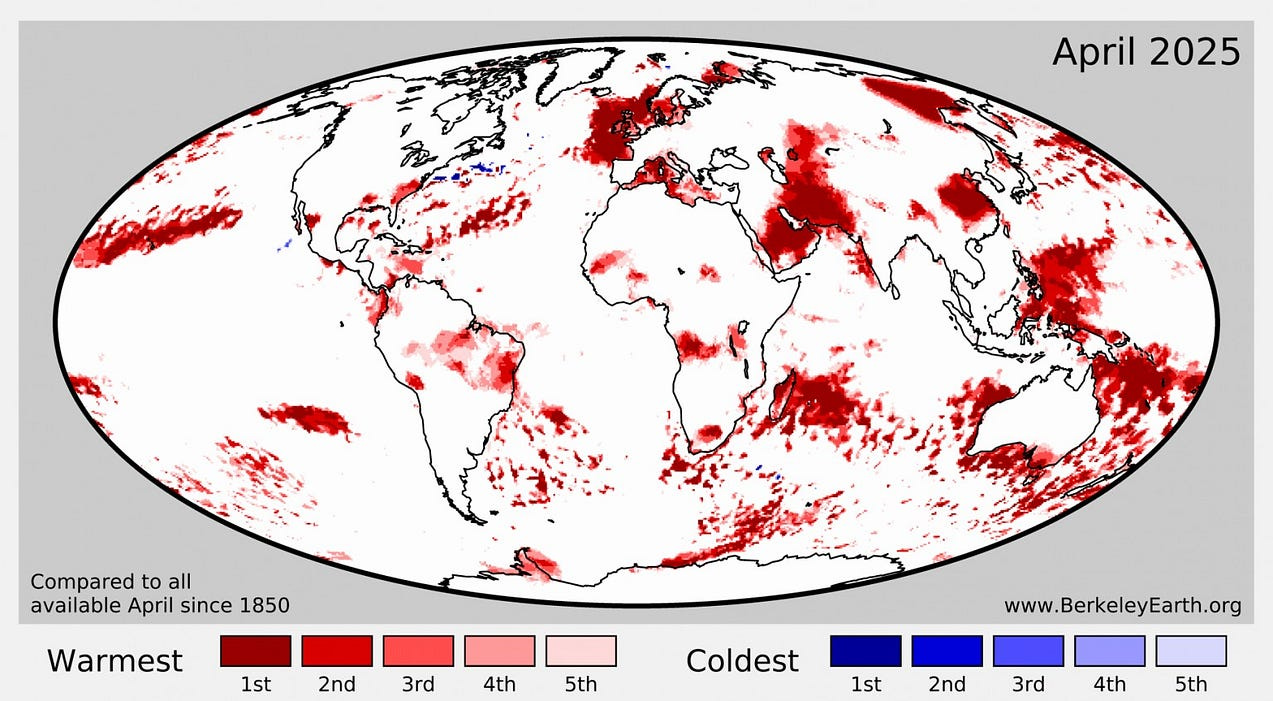
This RAPID Warming of the oceans is “the most important thing in the world” right now.
It should be headline news and reported as a “global crisis”. Everyone SHOULD BE AWARE of what’s happening and how BAD the Climate Crisis is about to become.
Half of world’s population endured extra month of extreme heat due to climate change, experts say
Scientists say 4 billion people, about half the world’s population, experienced at least one extra month of extreme…abcnews.go.com
Scientists say 4 billion people, about half the world’s population, experienced at least one extra month of extreme heat because of human-caused climate change from May 2024 to May 2025.
The extreme heat caused illness, death, crop losses, and strained energy and health care systems, according to the analysis from World Weather Attribution, Climate Central and the Red Cross.
“Although floods and cyclones often dominate headlines, heat is arguably the deadliest extreme event,” the report said. Many heat-related deaths are unreported or are mislabeled by other conditions like heart disease or kidney failure.
FYI- One of the BIG Denier memes is that more people die from cold than heat. As usual, it’s WRONG.
The scientists used peer-reviewed methods to study how much climate change boosted temperatures in an extreme heat event and calculated how much more likely its occurrence was because of climate change. In almost all countries in the world, the number of extreme heat days has at least doubled compared with a world without climate change.
Caribbean islands were among the hardest hit by additional extreme heat days. Puerto Rico, a territory of the United States, endured 161 days of extreme heat. Without climate change, only 48 would have occurred.
When it becomes impossible to survive someplace without constant air conditioning, is it still “livable”?
When do places start getting abandoned and where will these people go?
Particularly when the water is about to “run out” for billions of people.
Global fresh water demand will outstrip supply by 40% by 2030, say experts
Landmark report urges overhaul of wasteful water practices around world on eve of crucial UN summit….www.theguardian.com
This was from 2023 and I missed it. It’s terrifying because it adds to the sense of “convergence”, of multiple crises coming to a head “all at once” in a perfect storm of polycrisis.
“The world is facing an imminent water crisis, with demand expected to outstrip the supply of fresh water by 40% by the end of this decade”
Water is fundamental to the climate crisis and the global food crisis.
“There will be no agricultural revolution unless we fix water. Behind all these challenges we are facing, there’s always water, and we never talk about water.”
JUST A REMINDER — THE CURRENT RATE OF WARMING IS UNKNOWN
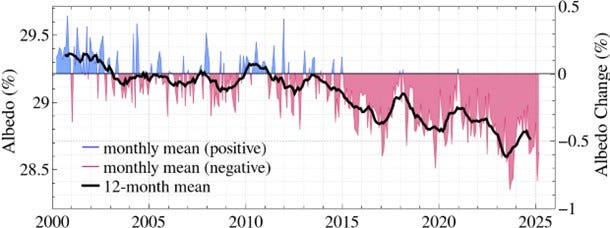
The Earth’s Albedo has “dimmed” and gotten less reflective. This decline over the last 25 years has GREATLY accelerated since 2014 and has reached unprecedented levels since 2020.
Hansen thinks it's MOSTLY about Clouds.
Large Cloud Feedback Confirms High Climate Sensitivity. 05/28/25
Earth’s albedo (or reflectivity) is the portion (percent) of incoming solar radiation that is reflected back to space. As shown in Fig. 1, in the period of precise satellite data (since early 2000), Earth’s albedo has decreased about 0.5%.
We described this change as a BFD (Big Fucking Deal) because it has staggering implications. Solar radiation reaching Earth is about 340 W/m2, averaged over Earth’s surface, so the 0.5% albedo decrease is a 1.7 W/m increase of absorbed solar energy.
A +1.7 W/m2 increase of absorbed solar energy is huge. If it were a climate forcing, it would be equivalent to a CO2 increase of +138 ppm.
Most of this albedo change must be climate feedback.
Of the two substantial long-term climate forcings — human-made greenhouse gases (GHGs) and aerosols — the effect of GHGs on Earth’s albedo is negligible, as GHG absorption in the solar spectrum is weak.
This is NOT about increasing levels of CO2. That's a separate part of the Climate System.
“Direct” aerosol forcing — i.e., change of the reflection and absorption of sunlight by aerosol change per se — is also small, at most ~0.1 W/m2. The only substantial climate forcing affecting Earth’s albedo is the “indirect” aerosol forcing that occurs via the effect of aerosols on cloud formation and cloud brightness.
IPCC estimates this indirect aerosol forcing change in the past 25 years as only about +0.1 W/m2, while we — based on the geographical and temporal change of absorbed solar radiation — estimate a larger aerosol forcing, +0.5 W/m2, due to reduced aerosol emissions from ships and thus reduced cloud cover.
Hansen thinks that about +0.5W/m2 of the albedo dimming is due to the change in marine diesel fuel since 2020. However, that’s NOT ENOUGH to account for what we are seeing happen since 2014.
The upshot is that most of the +1.7 W/m2 increase of energy absorbed by Earth must be due to climate feedbacks.
The huge increase of absorbed energy must be provided by some combination of the two climate feedbacks that significantly alter Earth’s albedo:
(1) change of the surface albedo, which is due mainly to change of sea ice area.
(2) change of clouds.
We KNOW very accurately how much “ice loss” has changed the albedo. Despite all the hype about it, it's a fairly small number.
The sea ice change is readily identified in satellite data and the resulting regional change of Earth’s albedo is accurately measured, amounting to 0.15 W/m2 in the period 2000–2024, averaged over Earth’s surface.
Thus, the one remaining feedback that affects Earth’s albedo — the cloud feedback — is very large. Rounding off, if our estimate of the aerosol forcing is right, the cloud feedback is increasing the flux of energy into the Earth system by an amount that has increased ~1 W/m2 in the past 25 years.
That's the GREY part of the graph.
The cloud feedback is so large that it rules out a climate sensitivity so low as IPCC’s best estimate of 3°C for doubled CO2, as we show below.
SO, Hansen thinks about 2/3rds of the albedo loss is “about clouds”. Which answers the question I asked back in February of 2022.
Climate Report Part Three continued..smokingtyger.medium.com
What made the Earth dimmer and Global Warming worse?
Is this about clouds?
Apparently, about 2/3rds of it is. That's NOT good news.
This should scare you.
Because if this feedback has started, we may not be able to do anything about it. We can make the planet “hazier” via geoengineering by injecting aerosol particulates into the atmosphere. That would make the planet more reflective and cool the atmosphere. But a lot of heat has built up in the oceans. This research indicates that as the oceans release it, they will suppress cloud formation.
We can make the planet hazier; we cannot make it cloudier. The implications of this are that climate change is going to be faster than we expected and harder to slow down via geoengineering.
If we have triggered a cloud diminishment feedback by warming the oceans, then we are on the edge of the abyss. 009 - The Crisis Report Substack
This is what “the abyss” looks like according to the Insurance Actuaries at the Institute of Actuary Science, Exeter.
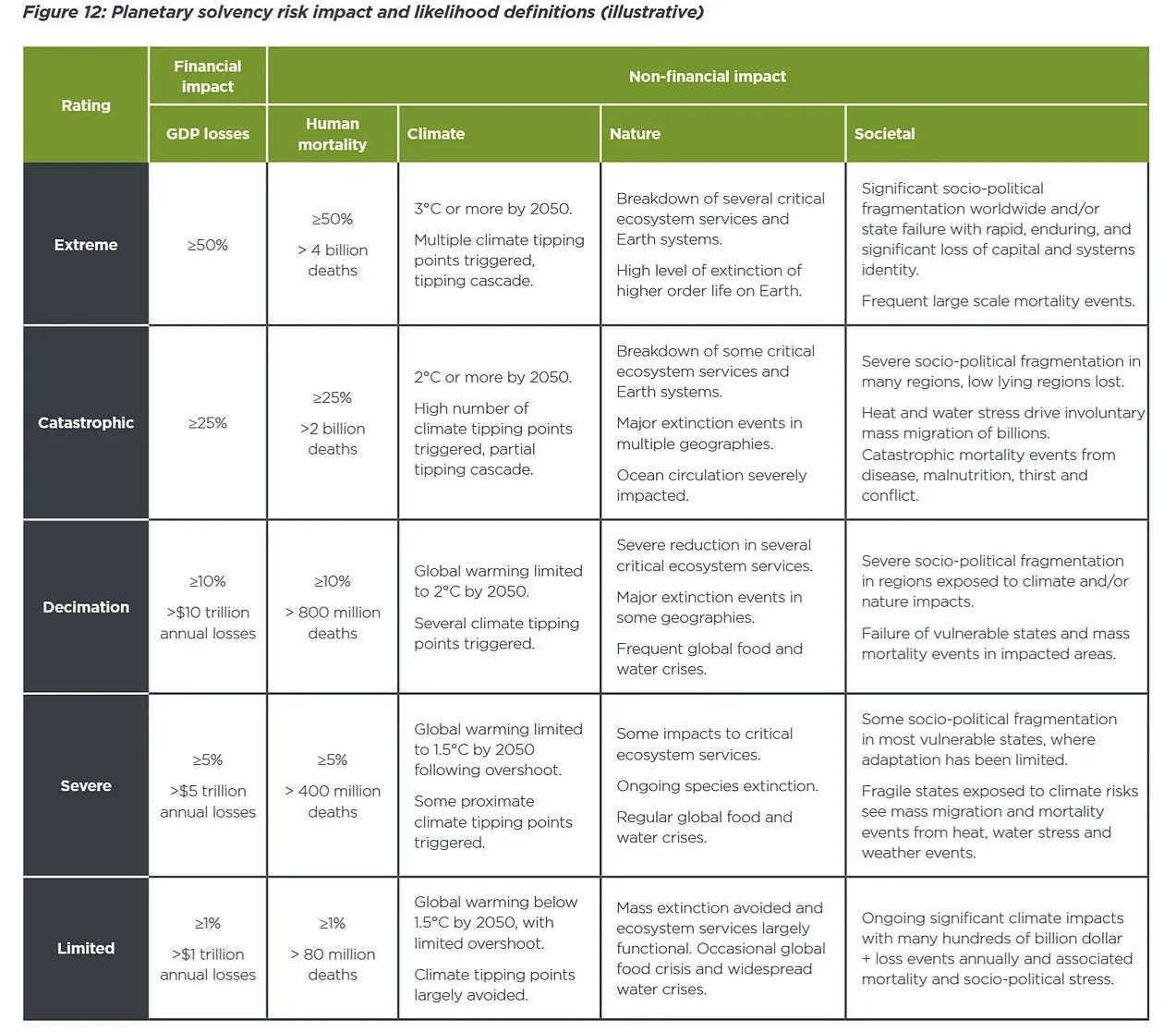
That’s a -25% population decline at +2°C sustained. BY 2050.
We are at +1.6°C over baseline and warming at a rate of +0.36°C (Hansen) per decade.
We will BE at +2°C over baseline by 2035 AT THE LATEST.
Here’s what that’s forecast to look like on the ground, “IRL”.
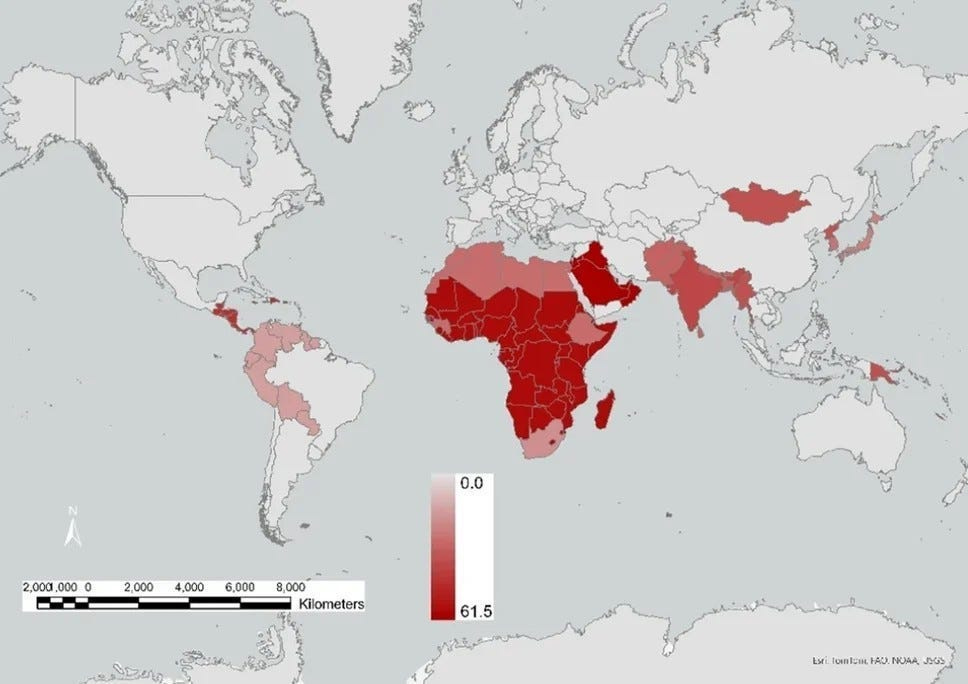
2 BILLION STARVING OVER THE NEXT TEN YEARS.
That’s “the edge” we are about to go over.
This is my analysis.
This is what I see.
This is my “Crisis Report”.
rc 06/03/2025
Addendum: Meanwhile….
JPMorgan hired NOAA’s chief scientist to advise (high net worth) clients on navigating climate change
From the interview.
Give us an example, on a ground level, of what some of that expertise does for investors.
There’s a client that’s concerned about the future of wildfire risk, and so they’re asking, How is wildfire risk unfolding? Why is it not in building codes? How might building codes change in the future? What happens for that? What type of modeling is used for that, what type of observations are used for that?
So I can explain to them the whole flow of where is the data? How is the data used in decisions, where do regulations come from. How are they evolving? How might they evolve in the future?
So we can look through the various uncertainties of different scenarios of what the world looks like, to make decisions about what to do right now, to be able to prepare for that, or to be able to shift in that preparation over time as uncertainty comes down and more information is known
So are they making investment decisions based on your information?
Yes, they’re making investment decisions. And they’re making decisions of when to invest because sometimes they have a knowledge of something as it’s starting to evolve.
They want to act either early or they want to act as more information is known, but they want to know kind of the whole sphere of what the possibilities are and when information will be known or could be known.
They need to know what are the conditions that they will know more information, so they can figure out when they want to act, when that threshold of information is that they need to act.
How does that then inform their judgment on their investment, specifically on wildfire?
Because wildfire risk is growing, there’ve been a few events like the Los Angeles wildfires that were recently seen. The questions that I’m getting are could this happen in my location?
When will it happen? Will I have advanced notice?
How should I change and invest in my infrastructure? How should I think about differences in my infrastructure, my infrastructure construction?
Should I be thinking about insurance, different types of insurance?
How should I be accessing the capital markets to do this type of work?
It’s questions across a range of trying to figure out how to reduce vulnerability, how to reduce financial exposure, but then also, if there are going to be risks in this one location, maybe there are more opportunities in these other locations that are safer, and I should be thinking of them as well.
It’s holistic risk management and thinking through risk and what to do about it, but then also thinking about what opportunities might be emerging as a result of this change in physical conditions in the world.
With the cuts by the Trump administration to NOAA, to FEMA, to all of the information gathering sources — we’re not seeing some of the things that we normally see in data. How is that affecting your work?
I am looking to what is available for what we need, for whatever issue. I will say that if data is no longer available, we will translate and move into other data sets, use other data sets, and
I’m starting to see the development out in certain parts of the private sector to pull in those types of data that used to be available elsewhere.
I think that we’re going to see this adjustment period where people search out whatever data it is they need to answer the questions that they have. And there will be opportunities.
There’s a ton of startups that are starting to develop in that area, as well as more substantial companies that have some of those data sets. They’re starting to make them available, but there’s going to be this adjustment period as people figure out where they’re going to get the information that they need, because many market decisions or financial decisions are based on certain data sets that people thought would always be there.
But the government data was considered the top, irrefutable, best data there was. Now, how do we know, when going to the private sector, that this data is going to be as credible as government data?
There’s going to be an adjustment period as people figure out what data sets to trust and what not to trust, and what they want to be using. This is a point in time where there is going to be adjustment because something that everyone got used to working with, they now won’t have that.
And that is a question that I’m getting from a lot of clients, of what data set should I be looking for?
How should I be assessing this problem?
Do I build in-house teams now to be able to assess this information that I didn’t have before? And I’m starting to see that occurring across different sectors, where people (high net worth people) are increasingly having their own meteorologist, their own climatologist, to be able to help guide them through some of these decisions.
Final thoughts?
Climate change isn’t something that is going to happen in the future and impact finance in the future. It’s something that is a future risk that is now actually finding us in the bottom line today.
— — — — — — — —
Don't you wish you had someone working at JPMORGAN who was working for you?
The 1% don't expect to be among the 25% who die over the next ten years. They hope to get EVEN RICHER.




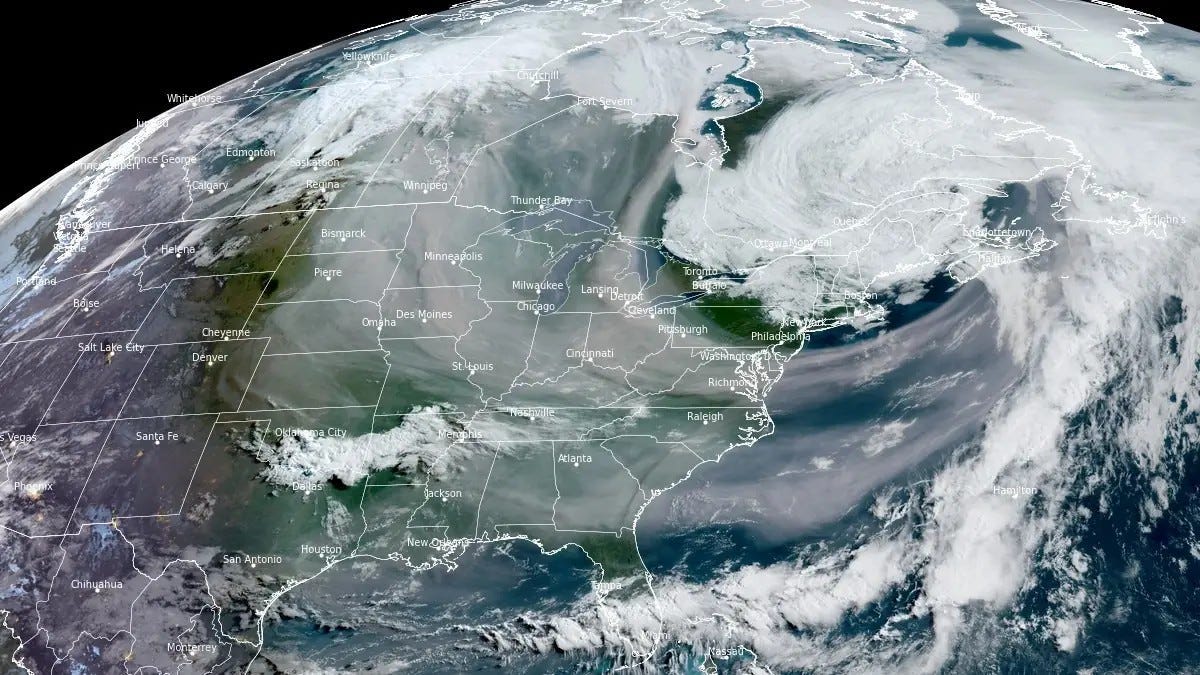

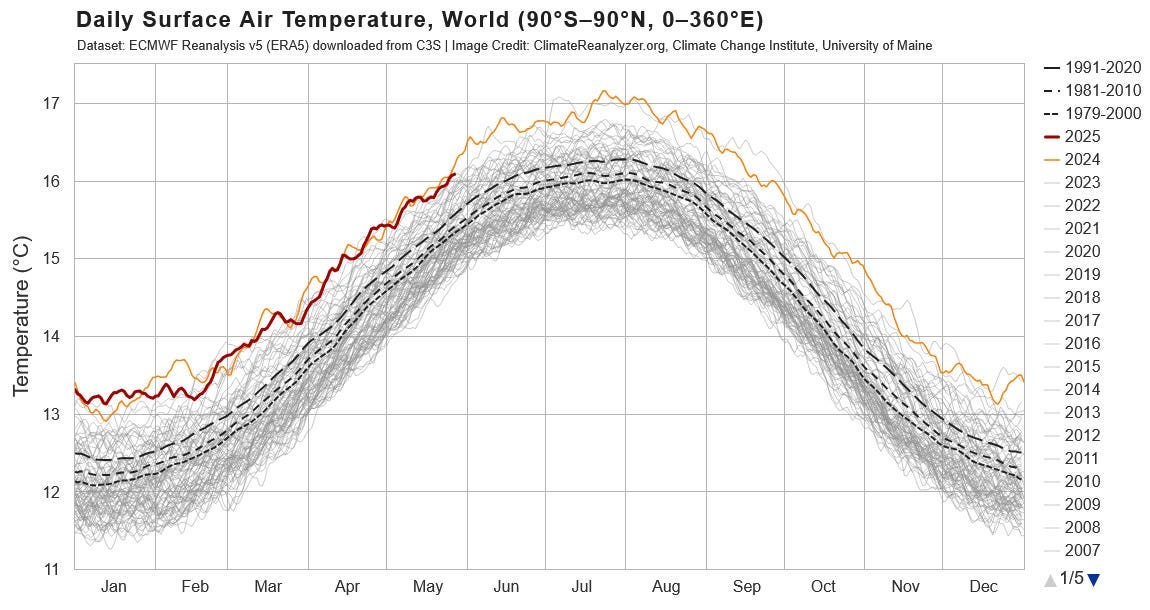


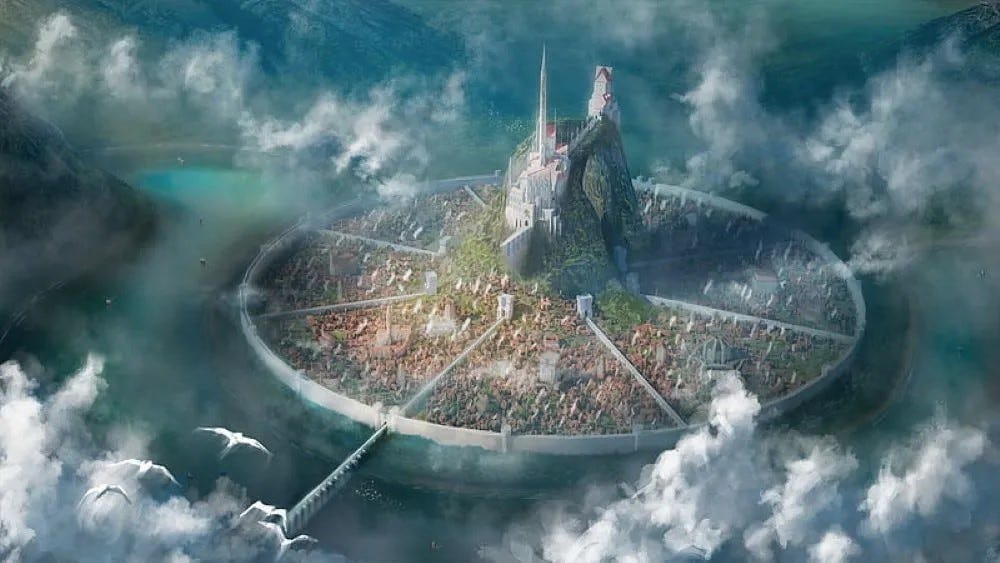

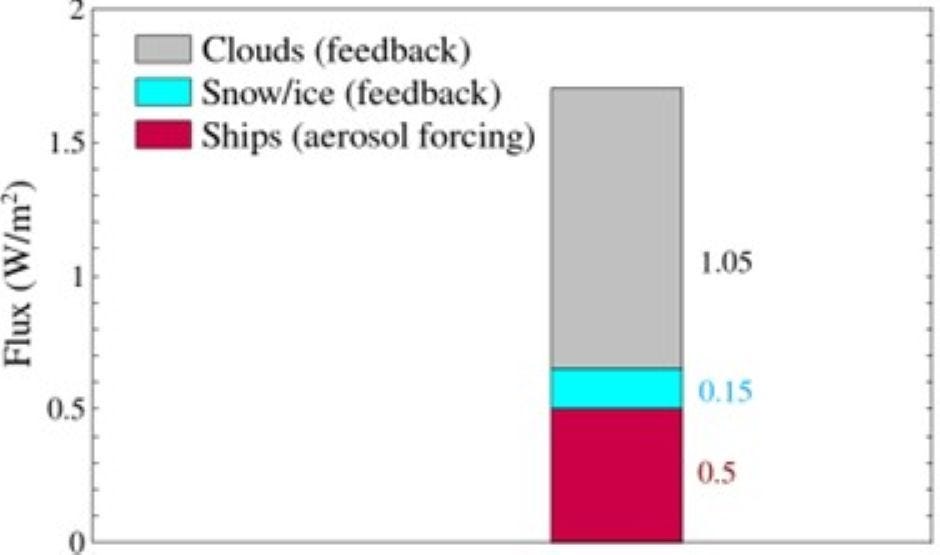

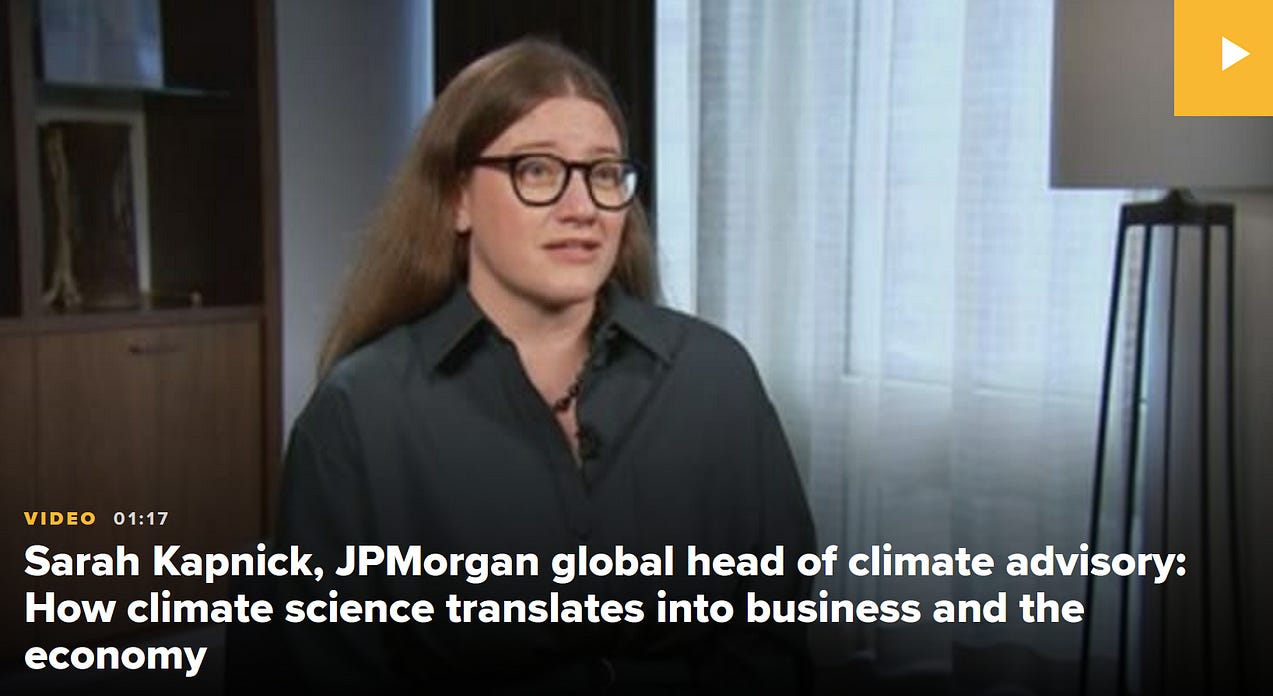
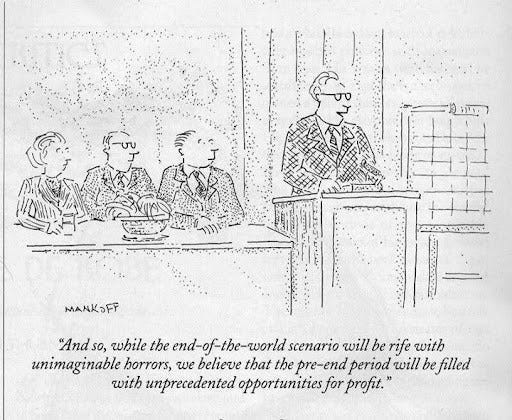
In the past I have followed the 'world view' on climate, environment and economies, and my concerns have been global, as yours, Richard.
Today I find myself looking at the maps and diagrams to determine how they might affect my locality, my plans and for my (optimistic) expectations of my own lifetime. If two billion or 5 billion have to die from the effects of climate, and past and current decisions made by economics and politics, then I don't intend for that to include me, which seems to be the same viewpoint of those High Net Worth rich people too! That much is understandable, a logical self-preservation. I am surprised more people aren't doing the same.
But this is where it gets more difficult:
I have long been preparing myself to harden my heart to the psychological overload of so much pain and suffering to come, and now here already for those in Gaza and Ukraine, and increasingly in the USA, that in itself may be as damaging to the fabric of our societies as the physical effects of high temperatures, droughts, famines, wars and ethnic genocide. Empathy, my empathy, everyone's empathy, seems to have limits. There is a point when the psychological damage becomes too much to bear and to protect our (my) sanity, we have to shut out those furthest away from up, and focus on 'our own'; family, friends, neighbours, own communities, 'people like us'.
And this isn't some prophecy for a dystopian future; when that nice-but-boring Uncle Joe Biden decided to send tens of $ millions of military hardware and munitions to Netanyahu to exterminate Palestinian civilians in Gaza, the vast majority of Americans DID NOT CARE! Even most Democratic voters, long claiming the moral high ground, seemed not to care, and I still see Substack contributors praising Biden as a fine man, an excellent President. His personal involvement in genocide either agreed with or blanked out.
Here in Europe, the danger now is shown from your map on the climate effects on Africans, and the inevitable mass migration northward into Europe, especially Italy and Spain, as they attempt their own survival. This is already driving a shift to Far-Right politics on the sole basis of controls on migration, specifically the idea of being culturally overwhelmed by Blacks, and I fully expect for the public to eventually support harsher and more ruthless treatment of Black African and Arab migrants, both in their attempts to cross the Mediterranean, and on their arrival into Europe.
Perhaps policies and actions like ICE in America?
Perhaps THIS is the real destruction? When humans simply stop caring about other humans and what happens to them? What happens when empathy is just too psychologically 'expensive', so we stop living in 'communities' and it becomes every man for himself?
All in all, another accelerating degradation of habitat for humans. At least the wildfires have partial negative feedback. They generate more aerosols/nucleating particles forming more clouds to help mask the warming that otherwise would surely impact sooner.
The air quality issue is no joke though, it severely impacts those with respiratory problems and even healthy organisms have trouble in it. My healthy basal breed adult dog coughs, snorts and reverse hiccups going outside now. It's ok inside though, I use devices powered by fossil fuels to filter the air.
It's said hunter-gathers had to work much less to survive than modern humans. Somehow it seems like we took the wrong path a long time ago.